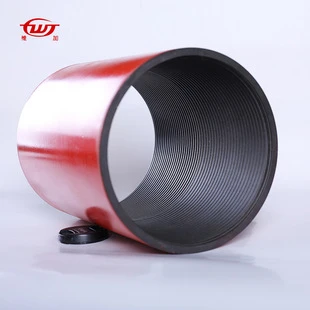- Afrikaans
- Albanian
- Amharic
- Arabic
- Armenian
- Azerbaijani
- Basque
- Belarusian
- Bengali
- Bosnian
- Bulgarian
- Catalan
- Cebuano
- Corsican
- Croatian
- Czech
- Danish
- Dutch
- English
- Esperanto
- Estonian
- Finnish
- French
- Frisian
- Galician
- Georgian
- German
- Greek
- Gujarati
- Haitian Creole
- hausa
- hawaiian
- Hebrew
- Hindi
- Miao
- Hungarian
- Icelandic
- igbo
- Indonesian
- irish
- Italian
- Japanese
- Javanese
- Kannada
- kazakh
- Khmer
- Rwandese
- Korean
- Kurdish
- Kyrgyz
- Lao
- Latin
- Latvian
- Lithuanian
- Luxembourgish
- Macedonian
- Malgashi
- Malay
- Malayalam
- Maltese
- Maori
- Marathi
- Mongolian
- Myanmar
- Nepali
- Norwegian
- Norwegian
- Occitan
- Pashto
- Persian
- Polish
- Portuguese
- Punjabi
- Romanian
- Russian
- Samoan
- Scottish Gaelic
- Serbian
- Sesotho
- Shona
- Sindhi
- Sinhala
- Slovak
- Slovenian
- Somali
- Spanish
- Sundanese
- Swahili
- Swedish
- Tagalog
- Tajik
- Tamil
- Tatar
- Telugu
- Thai
- Turkish
- Turkmen
- Ukrainian
- Urdu
- Uighur
- Uzbek
- Vietnamese
- Welsh
- Bantu
- Yiddish
- Yoruba
- Zulu
casing collar
Understanding Casing Collars in Oil and Gas Operations
Casing collars are critical components in the oil and gas industry, playing a vital role in ensuring the integrity and efficiency of drilling operations. As the demand for oil and gas continues to rise, advancements in drilling technology and techniques are making the use of casing collars more prominent and sophisticated.
At its core, a casing collar serves as a connection point in the casing string, which is an essential structure that lines the drilled wellbore. The casing is crucial for maintaining the stability of the well, preventing collapse, and protecting groundwater from contamination. It also facilitates the production and transportation of hydrocarbons. Casing collars are typically made from high-strength steel and are designed to withstand extreme pressures and temperatures encountered during drilling operations.
One of the primary functions of casing collars is to provide a point for the attachment of various tools and equipment. They are equipped with a series of grooves and threads that allow for easy connection and disconnection of drilling tools, such as cementing plugs or packers. This modularity is vital during the drilling process, where different tools are needed at various stages to optimize performance and reduce drilling time.
Casing collars come in different types and designs, depending on the specific needs of a drilling operation. Some are designed with internal mechanisms, allowing for more complex operations, such as the deployment of downhole tools. Others are simplified versions used primarily for structural support. The selection of the appropriate casing collar is crucial, as it can significantly impact the overall performance of the drilling process.
casing collar

One of the noteworthy aspects of casing collars is their role in well integrity. As wells age, they are subjected to a variety of stresses, including thermal expansion and contraction, pressure fluctuations, and chemical corrosion. High-quality casing collars help mitigate these issues by ensuring that the casing remains securely situated within the wellbore. This is particularly important in preventing leaks, which can lead to environmental contamination and loss of production efficiency.
Moreover, casing collars are often equipped with technologies that enhance their functionality. Innovations such as smart collars, which have embedded sensors, can provide real-time data on pressure, temperature, and other critical parameters during drilling operations. This data can be invaluable, allowing operators to make informed decisions and adjustments to their drilling strategies based on actual conditions rather than estimates.
In terms of installation, casing collars are added to the casing string before it is lowered into the wellbore. This process requires precision and care, as improper installation can lead to serious complications down the line, including casing failures or operational delays. Rigorous quality control measures are employed during manufacturing and installation to ensure that each casing collar meets stringent industry standards.
In conclusion, casing collars are indispensable in modern oil and gas drilling operations. Their ability to provide structural support, facilitate tool deployment, and maintain well integrity makes them a key component in the successful extraction of hydrocarbons. As technology continues to evolve, the role of casing collars will likely expand, incorporating even more advanced features to enhance the safety and efficiency of drilling operations. The future of casing collar design and application looks promising, aligning with the industry's ongoing quest for innovation and sustainability.
-
Well Casing Extension Couplings – Applications and InstallationNewsJun.06,2025
-
Types of Crossover Subs in Drilling & CompletionNewsJun.06,2025
-
Key Features of High-Quality Tubing Pup JointsNewsJun.06,2025
-
Installation and Maintenance Tips for Steel Couplings for PipeNewsJun.06,2025
-
How to Select the Right Pup Joint for Oil & Gas OperationsNewsJun.06,2025
-
Applications of Stainless Steel Pipe CouplingsNewsJun.06,2025







